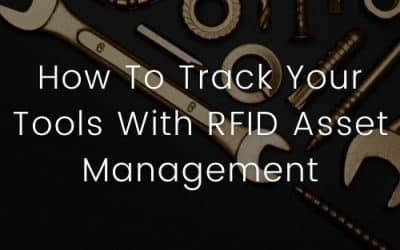Lab equipment tracking software will help you save time and money. With this software, you can track how a range of assets move, from small tools and equipment to larger, higher-value assets.
The range of functionality you can leverage gives you a speedy ROI, no matter the assets you’re tracking. This is because equipment tracking software is built for purpose, meaning you don’t have to use unwieldy, impossible to manage spreadsheets anymore!
Find out more about how lab equipment tracking software works and how it will benefit you, here.
What Is Lab Equipment Tracking Software?
Lab equipment tracking software is a system that allows you to log unique assets as digital profiles. You will then be able to add critical asset data to them.
Instead of searching for asset data within a large spreadsheet, with software, you’ll be able to find the asset within your system and view critical information within a neatly laid out profile.
Therefore, if you want to identify or log issues with any of your equipment, you will be able to do so against a specific asset with ease.
Asset tags improve these operations, too, as asset tags allow you to scan your equipment to find it on your system. Then, once you have your asset’s profile in front of you, you can add data, including issues and maintenance information.
Why Do You Need Asset Tracking?
Equipment tracking software is a type of asset tracking system. Asset tracking is essential because it gives you a clean and quick way to view, manage, update, and control your assets.
With no visibility, there’s an incredibly high risk of:
- Assets going missing
- Damage going unnoticed or unreported
- Duplicate purchases being made
- Minimal financial visibility
All of these are especially critical to track in a lab, when assets move frequently between multiple parties.
Therefore, when you use lab equipment tracking software you have more visibility over where assets are, who is using them, and the state they’re in, allowing you to take your assets further.
RFID Asset Tracking Capabilities
Laboratories have many assets that move around between locations frequently, critical health and safety standards, and higher-value assets, too, so when you use equipment tracking software, you can also opt for an RFID solution.
RFID asset tracking solutions give you even more control and automation over your assets. There are two types of solutions, here, handheld RFID and fixed RFID.
Handheld RFID uses a third-party reader that connects to your phone via BlueTooth. You can then use this reader to scan tags from a distance and perform bulk update actions, such as audits. This is helpful for speed and for distance, for health and safety concerns.
Fixed RFID asset tracking automatically updates an asset’s location every time it moves to a new one. In other words, if an asset is leaving one lab and entering another, this will get logged in your lab equipment tracking software automatically with no manual input.
GPS Tracking Capabilities
If your assets are travelling greater distances, you can also use GPS tracking capabilities to track where your assets are on the map. So, if you’re delivering test tubes across the country, you can track these with a GPS solution.
Overall, the ability to mix and match solutions gives you a complete level of transparency over where your assets are, who has them, and how they’re behaving, saving you a lot of time and money.
Lab equipment tracking software takes your cost and time-saving operations to the next level. To find out more about how itemit’s lab equipment tracking software can help your business, you can contact the team at team@itemit.com or fill in the form below to start your 14-day free trial.
Lab Equipment Tracking Software
Choose a better way to track your assets
Start your free 14-day trial now
Instant access. No credit card details required.
Related articles
What Is A School Asset Tracking System?
A school asset tracking system helps you monitor, manage and track your school’s assets. You’ll save time and money with asset tracking software.
How To Track Your Tools With RFID Asset Management
RFID asset management makes tool tracking easy and effective. Find out how to track your tools with RFID here. Contact the team today to find out more!
3 Ways GPS Asset Tracking Saves You Money
GPS asset tracking will save you time and money by improving your levels of transparency and accountability. Track your equipment when it leaves your sites.


